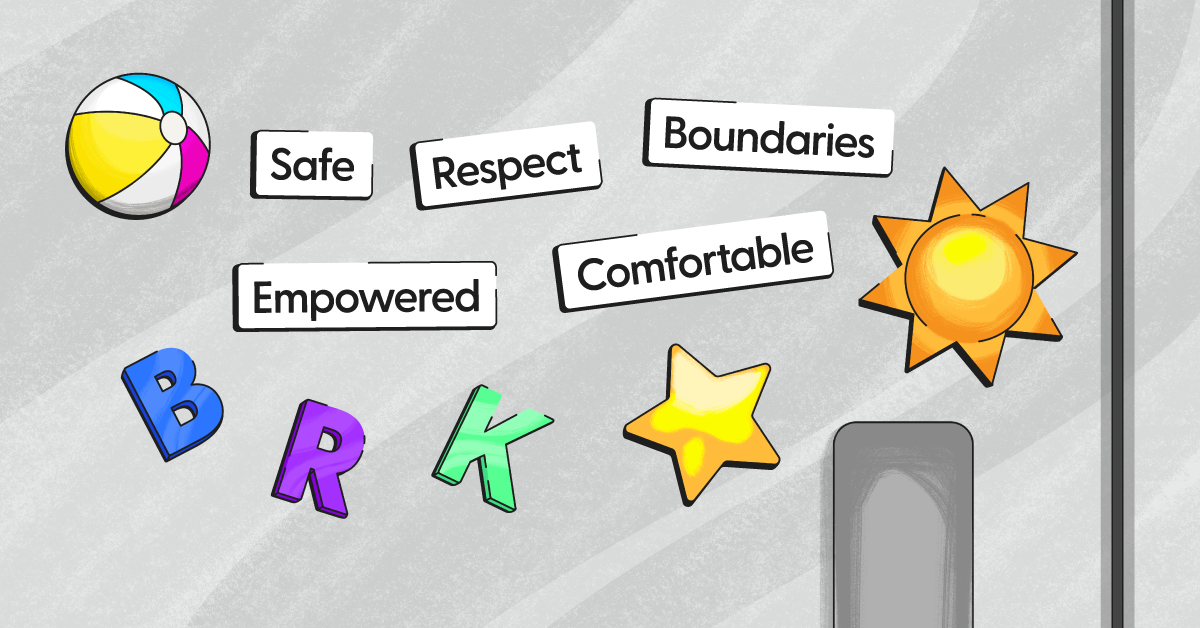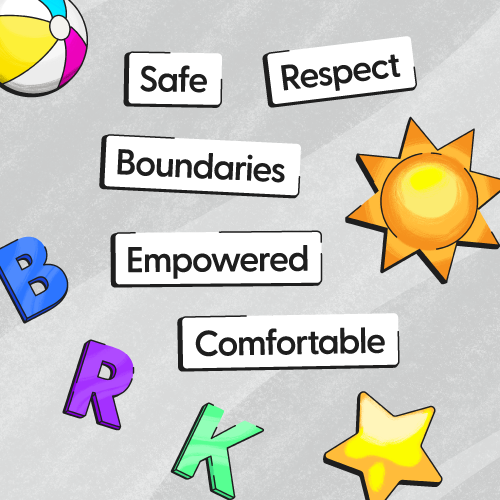
What is consent? This may be something you’ve asked yourself after seeing something in the news, hearing about an experience someone you love went through, or talking through dating rules with your kids. Much like the classic “birds and the bees” talk, a discussion about consent can feel very uncomfortable — especially if your child is on the younger side.
If you aren’t sure what to say, or when, or during what stages of your kid’s development, this guide can help the whole thing feel a little less daunting. Just remember that you don’t have to cover everything there is to explain about consent during one ride home from soccer practice or over one mug of hot chocolate. This conversation can (and should) evolve as your kid continues to mature.
What is Consent?
Consent is an agreement between all involved parties that something — usually sexual — is allowed to happen. In the wake of the #MeToo movement, you’ve probably at least encountered the term, but thinking about the idea in the context of adult experiences is pretty different than figuring out how to pass it along to your own child.
After all, there’s a great deal of nuance to be considered. Getting consent does not exclusively mean hearing the other person say “yes” out loud. People often use a more active definition of this called “affirmative consent,” meaning each person vocally agrees to participate (rather than expresses their agreement through body language, for example). Consent can also include:
- Making sure you are not pressuring the other person
- Ensuring they are not under the influence of any substances that can affect their decision
- Considering any power dynamics that may make them feel unable to say no
- Being immediately willing to change course should they retract their permission at any point
How to Talk With Your Kid About Consent
You might be uncomfortable with the idea of introducing your six-year-old to the concept of sexual assault, or be worried about accurately explaining the nuances of getting and giving consent to your teen who’s recently started dating.
The good news is that you don’t have to dive into the deep end when your kid is still in kindergarten, and you don’t have to tell your tenth grader everything there is to know about consent in a single conversation. Instead of thinking of this as something to check off a “what to teach my kid” list, start to see it as an ongoing discussion that will probably change as your child’s needs, maturity level, and stage of life change.
How Young Kids Can Practice Respecting Boundaries
What is consent to a younger child? Your elementary school kid might not be ready to learn about sexual violence, but that doesn’t mean they can’t start learning about what it means to give — and ask for — consent. No matter how young they are, they can start practicing showing respect to themselves and others.
Obviously, your kid doesn’t have the option to say no in every situation. They need to brush their teeth before bed, for example. But you can still find ways to give them choices to help them feel a sense of choice when it comes to their body. You could let them choose between two flavors of toothpaste, decide which side of their mouth to brush first, or pick the song they want to listen to as they scrub away. Each of these small options lets them practice making decisions without compromising their tooth health.
Here are some other simple ways you can help your young kid practice respecting boundaries.
Stop When They Ask You to Stop Tickling Them
A tickle fight continues until someone pees their pants, right? It might seem really harmless, but if your kid is begging for you to stop tickling them, that’s a great opportunity for you to show them how important it is to stop touching someone else when they ask you to. Make a game of this by taking turns seeing how quickly you can each remove your hands when the other person says “please stop!” Remind your child that even if you’re giggling, they must respect your boundary and stop tickling you the moment you ask them to stop.
Let Them Choose Not to Hug Someone
When you were growing up, it may have been nonnegotiable to see a relative or family friend without greeting them with a big hug. But if your child feels uncomfortable embracing someone else, you can model consent for them by instead letting them choose to give that person a handshake, a high five, or a thumbs up.
Discuss Who is Allowed to See Their “Private Parts”
In previous decades, many parents saw strangers as the biggest threats to their kids’ safety, so taught them to watch out for “stranger danger” or never get into a van with a man promising candy. But we now know that the danger often lies much closer to home. According to RAINN, 97% of child abuse victims know their perpetrator.
Make sure to talk with your young child about who is allowed to see their genitals (experts recommend that you use anatomically correct terms). It might feel easier to say “private parts” or “the areas your bathing suit covers,” but using accurate terms with your child can help prevent them from feeling shame about their body parts. Explain that only you, perhaps their other parent if they have one, and their pediatrician can see their genitals, and that if anyone else asks to see, they should say no and come tell you as soon as possible.
Additional Resources
How Older Kids Can Model Consent
When your kid is at the age where they’re doodling their crush’s initials in their notebook (or whatever the 2021 equivalent of this is) and asking if they can start dating, they’re probably ready for more serious conversations about physical boundaries in a sexual context.
It can feel really sad to talk with them about sexual assault, harassment, or rape, but it’s important that they’re equipped to protect both themselves and those around them. No matter what your family’s values around sex are, it’s critical that your kid knows to treat other people’s bodies with respect and to demand the same in return. (Note: If your child has already experienced sexual violence, this resource can help you give them the support they need.)
Some Questions They Can Ask a Partner
- Is it OK if I kiss you?
- What would you like to do?
- May I hold your hand?
- Are you feeling uncomfortable?
- Do you want me to stop?
- Should we do something else now?
Non-Intimate Ways to Practice Consent
Your teen doesn’t have to be dating or sexually active to practice consent — although it’s important to talk with them about it in that context even if they aren’t allowed to date yet. Knowing ahead of time how to respond to unwanted advances can help them be prepared should they ever feel pressured to do something they don’t want to do. Before they’re ready to get physical with a potential romantic interest, they can show friends or siblings the respect that they will one day show someone else. Here are some good examples of ways to do this:
- Don’t push a friend to do an activity they’re uncomfortable with
- Ask if you can have a bite of someone’s sandwich before taking it
- Refrain from pantsing or giving a wedgie to a friend
- If someone has told you something privately, don’t share it with others
- Don’t pressure someone into watching a horror movie if they’re scared
- Learn to pick up on body language signs that a friend is uncomfortable
Additional Resources
This guide has hopefully given you some insight into the question “what is consent?” and provided some practical advice for how to broach the subject with your kid. As always, make sure they know the topic is always open for discussion and that you’re there to help them figure things out. While this subject can feel intimidating, you’re already their best advocate and teacher.
Read more
Bark helps families manage and protect their children’s digital lives.





